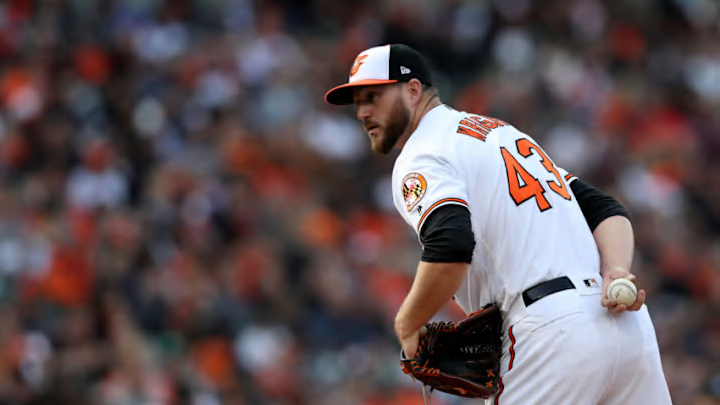Baltimore Orioles pitchers haven’t been able to finish the job once they get two strikes on opposing hitters.
In Sunday’s 15-3 loss to the New York Yankees, there were three home runs hit with two strikes. There were also three RBI-base hits on two-strike counts against a struggling pitching staff for the Baltimore Orioles.
A common theme through the first 10 games of the season has been when the Baltimore Orioles get two strikes on an opposing hitter, they struggle to put them away. How bad are the results? Below are where O’s pitchers rank in batting average, slugging percentage, and ISO power allowed in two-strike outs.
- Batting average- .255 (next highest- Texas Rangers: .234)
- Slugging percentage- .511 (next highest- Boston Red Sox: .398)
- ISO- .255 (next highest- Oakland A’s: .187)
The Orioles don’t just lead the league in all three of these categories, they are running away with massive leads. What about with two strikes and two outs? Again, these are all league-leading numbers.
- Batting average- .362
- Slugging percentage- .725
- ISO- .362
Opponent’s batting average with two strikes and two outs against the Baltimore Orioles is nearly 100 points higher than second place on the list. The Kansas City Royals have allowed a .268 average with two strikes and two outs, good for the second highest mark in baseball.
Which players are struggling the most to put away hitters? Among all pitchers with a minimum of 10 two-strike counts, Mike Wright has allowed a .471 average (8-17), behind only Brock Stewart for the highest average against in Major League Baseball. Even if you take Wright’s numbers out of the equation, the O’s still either lead or are tied for the league lead in these unfortunate numbers.
While taking a look at the leaderboards, I happened to notice a familiar face at the top. Hitters are 0-10 against Kevin Gausman when he gets two strikes on them. He threw seven shutout innings with seven strikeouts in his first outing with the Atlanta Braves this season. Good for him.
Dylan Bundy and Andrew Cashner have allowed a combined .283 average and five home runs. The home runs have been a major issue for the entire staff through all 10 games, especially with two strikes.
More from Birds Watcher
- Baltimore Orioles Sign RP Mychal Givens
- Gunnar Henderson: Destroyer of Four-Seam Fastballs
- Which Current Baltimore Orioles Pitchers Have the Best Curveballs?
- Orioles News: Should the O’s Pursue Eovaldi? + More MLB News
- Should the Baltimore Orioles Consider Signing Nathan Eovaldi?
Overall, O’s pitchers have surrendered a league-leading 25 home runs, giving up at least one in each game this season. They have issued 47 walks, tied for fifth-most in the league (the Oakland A’s have 49 but have also logged nearly 40 more innings) and recorded the second-fewest amount of strikeouts (71), while ranking 29th in the league in overall batting average against (.289) and 28th in the league in WHIP (1.66).
I don’t want to leave this as a complete list of sad pitching stats for the Baltimore Orioles, so I leave you with a bit of hope. Down on the farm, a number of O’s pitching prospects put in fantastic outings in their first starts of 2019. I know, one start means nothing, but finally being able to watch the top pitching prospects in action and watch them put up impressive outings brought a smile to my face and a bit of optimism.
Top pitching prospects DL Hall, Keegan Akin, Zac Lowther, and Blaine Knight combined to throw 21.2 innings in their 2019 debuts, allowing just four earned runs and striking out 28.
Will we see homegrown pitching talent find success at the major league level for the Baltimore Orioles? It could happen. Work your magic, Mike Elias.
